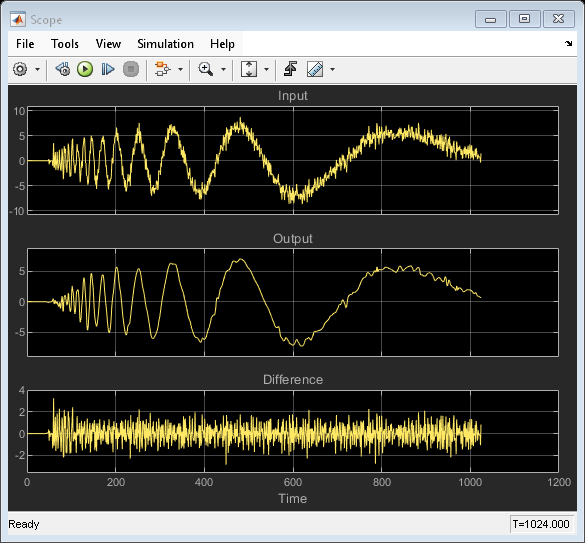Dyadic Analysis Filter Bank
Decompose signals into subbands with smaller bandwidths and slower sample rates or compute discrete wavelet transform (DWT)
Libraries:
DSP System Toolbox /
Filtering /
Multirate Filters
Description
You can configure this block to decompose a broadband signal into a collection of subbands with smaller bandwidths and slower sample rates. The block uses a series of highpass and lowpass FIR filters to repeatedly divide the input frequency range, as illustrated in Multilevel Filter Banks (the Asymmetric one).
You can specify the filter bank highpass and lowpass filters by providing vectors of filter coefficients. You can do so directly on the block mask. If you have a Wavelet Toolbox™ license, you can specify wavelet-based filters by selecting a wavelet from the Filter parameter. You must set the filter bank structure to asymmetric or symmetric, and specify the number of levels in the filter bank.
For the same input, the DWT configuration of this block does not produce the same
results as the Wavelet Toolbox
dwt function. Because DSP System Toolbox™ is designed for real-time implementation and Wavelet Toolbox is designed for analysis, the products handle boundary conditions and
filter states differently. To make the output of the dwt function
match the DWT output of this block, complete the following steps:
Set the boundary condition of the
dwtfunction to zero-padding. To do so, typedwtmode('zpd')at the MATLAB® command line.To match the latency of the block (implemented using FIR filters), add zeros to the input of the
dwtfunction. The number of zeros you add must be equal to the half-length of the filter.
The Dyadic Analysis Filter Bank block is same as the DWT block, but with different default settings.
Examples
Ports
Input
Output
Parameters
Block Characteristics
Data Types |
|
Direct Feedthrough |
|
Multidimensional Signals |
|
Variable-Size Signals |
|
Zero-Crossing Detection |
|
More About
References
[1] Fliege, N. J. Multirate Digital Signal Processing: Multirate Systems, Filter Banks, Wavelets. West Sussex, England: John Wiley & Sons, 1994.
[2] Strang, G. and T. Nguyen. Wavelets and Filter Banks. Wellesley, MA: Wellesley-Cambridge Press, 1996.
[3] Vaidyanathan, P. P. Multirate Systems and Filter Banks. Englewood Cliffs, NJ: Prentice Hall, 1993.
Extended Capabilities
Version History
Introduced before R2006a


